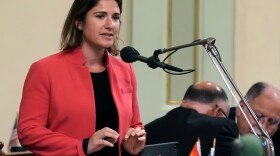A new report shows if you are a female faculty member or researcher at San Diego’s Scripps Institution of Oceanography (SIO), you get a lot less space to do your work. The report was written by a task force at University of California, San Diego (UCSD), where the institution is based.
The report said the disparity in lab and office space cannot be explained by funding, academic discipline or years a faculty member spent at the institution.
“These findings do not reflect the values of our university and our commitment to equity, diversity and inclusion,” said UCSD Chancellor Pradeep Khosla, in a letter introducing the report.
The facts in the finding of the report include:
- Overall, women hold 17% of the total space even though they constitute 26% of space holders, including emeriti.
- None of the 16 space holders who occupy over 3,000 square feet are women.
- Men have larger academic offices (average for women is 155 square feet compared to 180 square feet for men) and the average research space for men (1,016 square feet) is more than double that of women (498 square feet).
The report said the gender disparity in the case of research storage space at SIO is even greater than what’s seen in offices and labs.
“If the goal is to give faculty as much space as they need for the work that they do, and that men and women are to have equitable amounts of space, that mandate is not being achieved,” said Victor Ferreira, UCSD’s associate vice chancellor for faculty equity, who chaired the task force that prepared the report.
The problem of not having enough lab space can affect a researcher's work and the kinds of grants they can be considered for. This is especially true of STEM disciplines where work is done in labs.
“They require bench space so they can do biology research. They require group space so a group of postdoctoral researchers can get together and discuss the issues they’re doing research on,” Ferreira said.
“Because (female faculty members) don’t have as much space, they can’t be as productive, they can’t publish as many papers and they’re less likely to be viewed by granting agencies as being a successful researcher,” he added.
Ferreira said some of the gender inequity at Scripps Oceanography can be explained by the institution's history.
Back in the day, faculty were much more likely to be men, who got a first shot at laying claim to research space. Some of the research space at Scripps Oceanography is used by emeritus faculty, who are also much more likely than new hires to be men.
Another issue is the practice of men “inheriting” lab space from retiring faculty who have been able to pass it on to them.
Chancellor Khosla has called for the appointment of a “change management committee” to oversee reforms, led by SIO director Margaret Leinen.
The report itself has spelled out some recommendations. For instance, reallocate under-used space at Scripps Oceanography to the people who really need it, with an eye toward gender equity. Also recommended: a new strategic plan that determines what are the priorities for the institution.
"(A strategic plan) can help leaders decide better how to make decisions of scarce resources like space,” Ferreira said.
Ferreira said UCSD started the process of reviewing this gender gap in space allocation last May. He said it was always the plan to make the report public and publicize it in the spirit of transparency.






